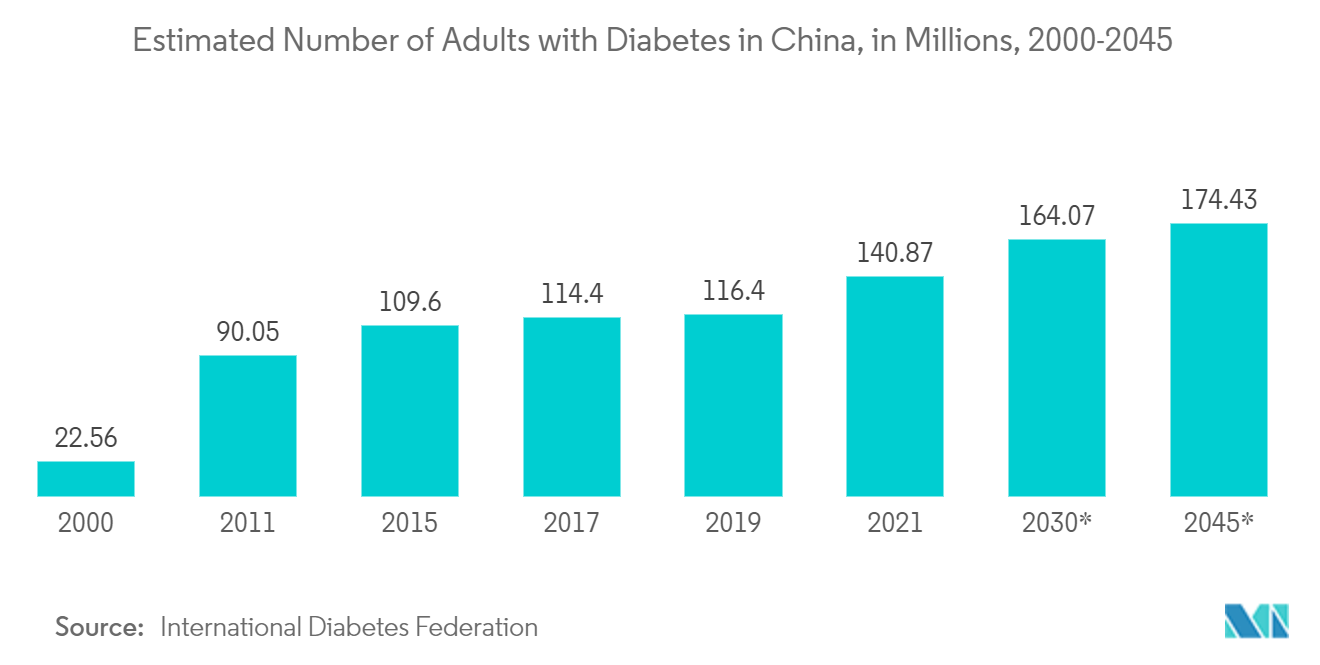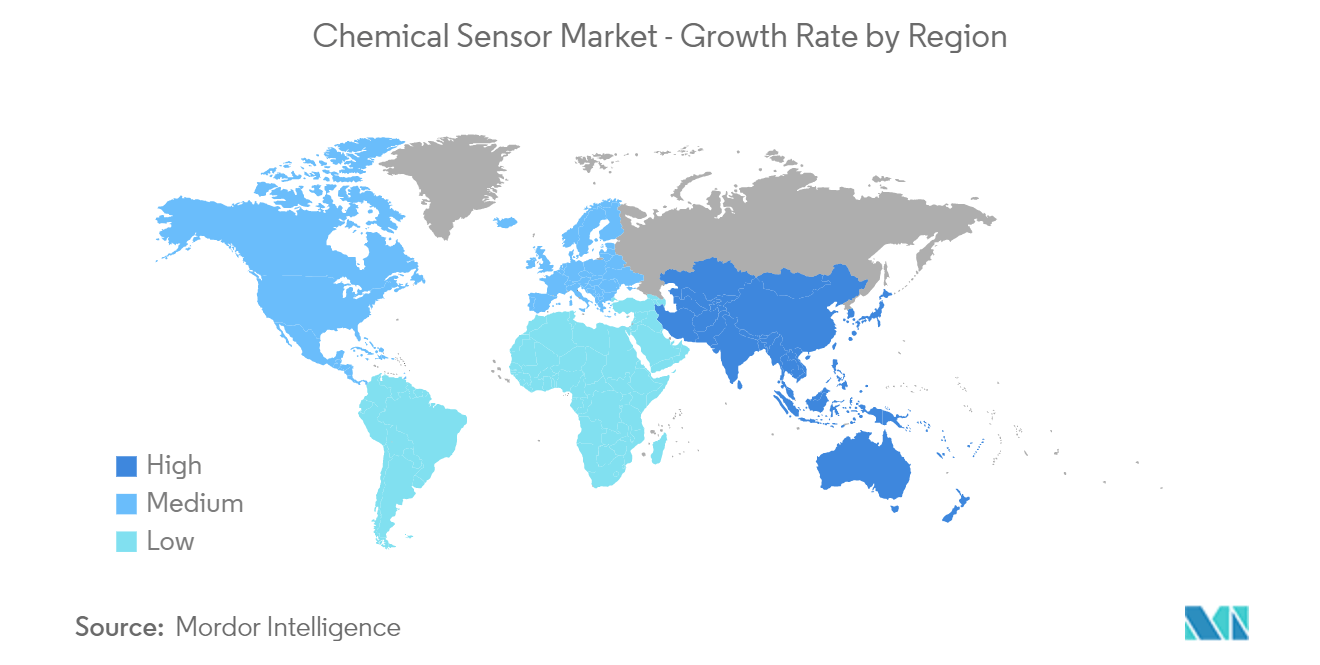Market Trends of Chemical Sensor Industry
This section covers the major market trends shaping the Chemical Sensor Market according to our research experts:
Medical Industry to Hold the Major Share
- Due to the rising demand for quick, small, precise, and portable diagnostic sensing equipment, the healthcare and biomedical sectors are a significant market for chemical sensors. Additionally, nanotechnology is becoming increasingly popular on the market and has significantly altered how chemical sensors operate. In vitro sensors for diagnostics have advanced, and a few items are about to be released in the near future. Chemical nanosensors also provide point-of-care diagnostics.
- The prevalence of diseases is anticipated to rise sharply as the population ages and becomes more susceptible to illness. Because of this, there is a need for chemical sensors, which are used in many clinical settings to do things like measure blood glucose or blood gasses.
- Opportunities with exponential growth potential have been established due to the growing need for the next generation of clinical diagnostic, measuring, and monitoring sensors in implanted and wearable devices. Due to cheaper raw materials and the use of nano- and microfabrication techniques in the industrial manufacturing process, the number of chemical sensors used in healthcare that are sold to the public has grown by a lot.
- Moreover, with the increasing rates of patients suffering from diabetes, government bodies in various countries are investing in developing effective diagnostic techniques, which is stimulating the adoption of chemical sensors in the healthcare sector.
- Cancer, diabetes, and neurological illnesses have all been successfully diagnosed using electrochemical sensors. These sensors are simple to use at home or at a doctor's office. Future advancements in electrochemical sensors could make them significant analytical tools for process analysis in healthcare facilities.

Asia-Pacific is Expected to Grow Significantly
- The concerning pollution levels in China, India, and other Asia-Pacific countries are driving the demand for chemical sensors. Low prices, flexible applications, and speedy technological implementations are fueling the need for chemical sensors in the Asia-Pacific market.
- Throughout the forecast period, growth is anticipated in the Asia Pacific area. Asia-Pacific nations frequently make investments in the oil and gas industry. New plants are being built to address the energy needs of countries like India, Bangladesh, Taiwan, and others. Chemical sensors are needed in the oil and gas industry to detect leaks and monitor confined spaces, among other things; thus, the building of new plants will raise demand for them. As a result, the Asia Pacific region is anticipated to experience growth in the worldwide chemical sensor market over the forecast period.
- The chemical sensors market forecast appears promising, owing to the increasing usage of chemical sensors in industrial safety operations and environmental monitoring programs. In addition, the defense industry urgently needs the development of sensors for early warning and protection of military troops against potential chemical and biological (C/B) attacks. Asia's military superpowers keep spending a lot on their military, which is part of a larger trend of growing defense spending around the world.
- The market is driven by rising investments in new oil and gas plants. The fast development of the oil sector in recent years has made accurate monitoring of environmental toxins a top priority. Energy demand has increased by 60% in the 10 ASEAN (Association of Southeast Asian Nations) nations over the previous 15 years. By 2040, the region's energy demand is anticipated to increase by two-thirds (source: IEA). Since electrochemical sensors can accurately identify a specific type of gas and even the smallest leak, many oil and gas corporations promote their use.
- Moreover, the greatest multifunctional research platform for nanotechnology is being constructed in China. In Suzhou, Jiangsu Province, the Vacuum Interconnected Nano-X Research Facility combines cutting-edge capabilities for material growth, device fabrication, and testing in a single ultra-high vacuum environment. The market for nano chemical sensors in defense and security is anticipated to support market expansion in the near future.


